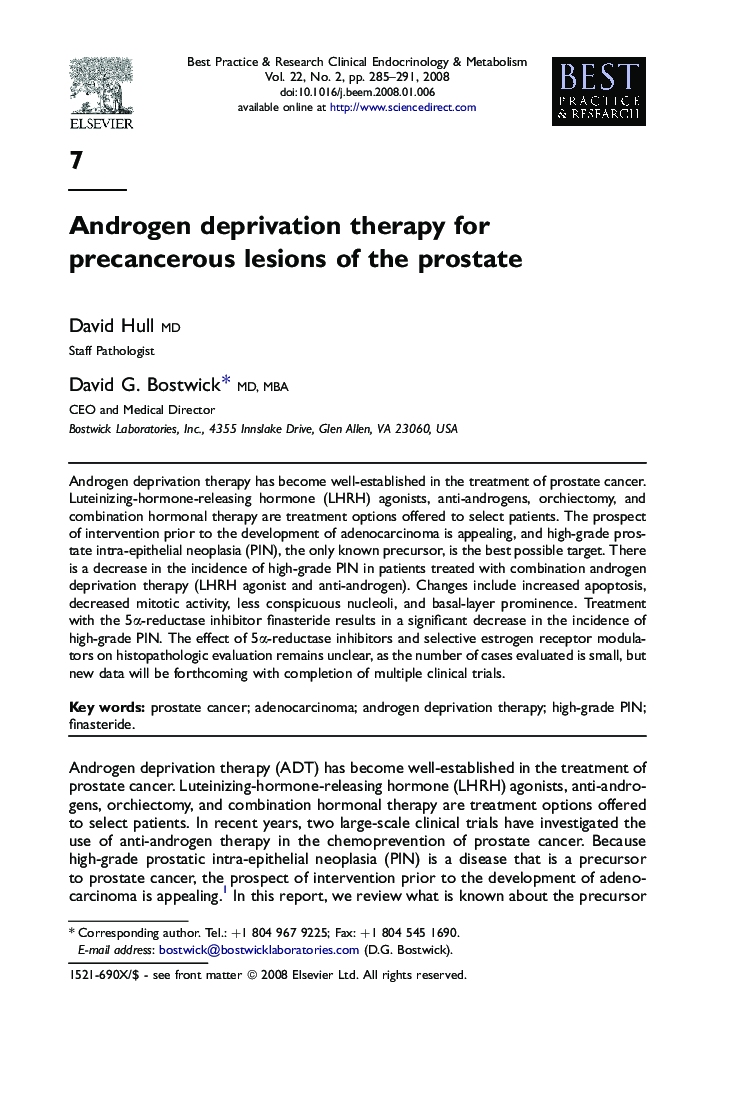| Article ID | Journal | Published Year | Pages | File Type |
|---|---|---|---|---|
| 2792194 | Best Practice & Research Clinical Endocrinology & Metabolism | 2008 | 7 Pages |
Androgen deprivation therapy has become well-established in the treatment of prostate cancer. Luteinizing-hormone-releasing hormone (LHRH) agonists, anti-androgens, orchiectomy, and combination hormonal therapy are treatment options offered to select patients. The prospect of intervention prior to the development of adenocarcinoma is appealing, and high-grade prostate intra-epithelial neoplasia (PIN), the only known precursor, is the best possible target. There is a decrease in the incidence of high-grade PIN in patients treated with combination androgen deprivation therapy (LHRH agonist and anti-androgen). Changes include increased apoptosis, decreased mitotic activity, less conspicuous nucleoli, and basal-layer prominence. Treatment with the 5α-reductase inhibitor finasteride results in a significant decrease in the incidence of high-grade PIN. The effect of 5α-reductase inhibitors and selective estrogen receptor modulators on histopathologic evaluation remains unclear, as the number of cases evaluated is small, but new data will be forthcoming with completion of multiple clinical trials.
